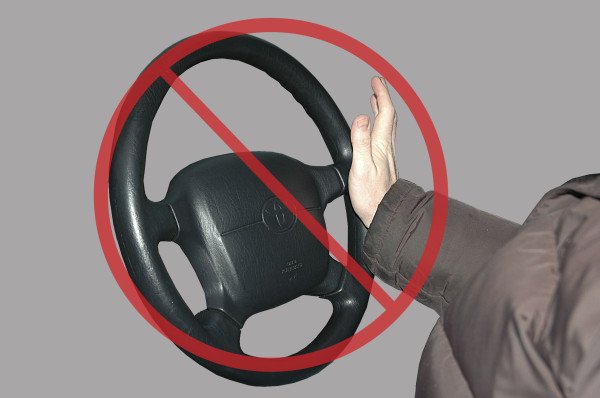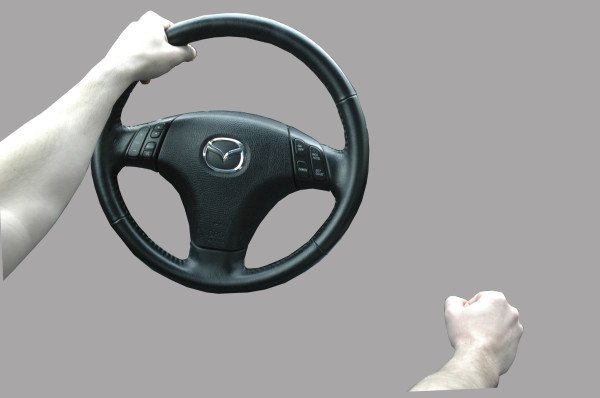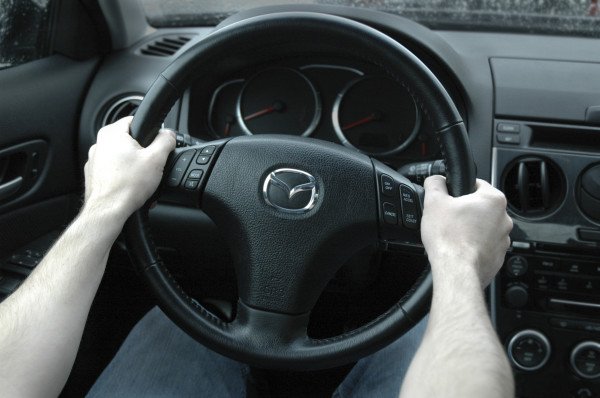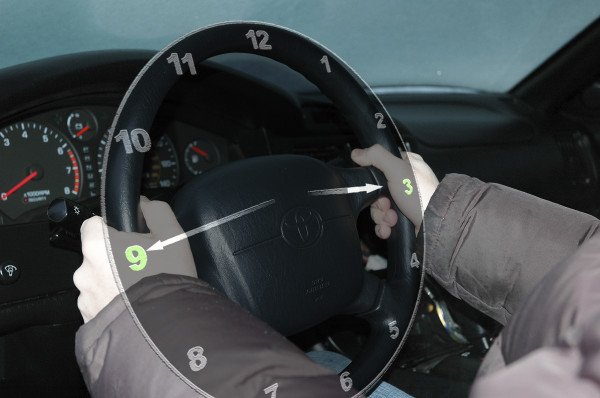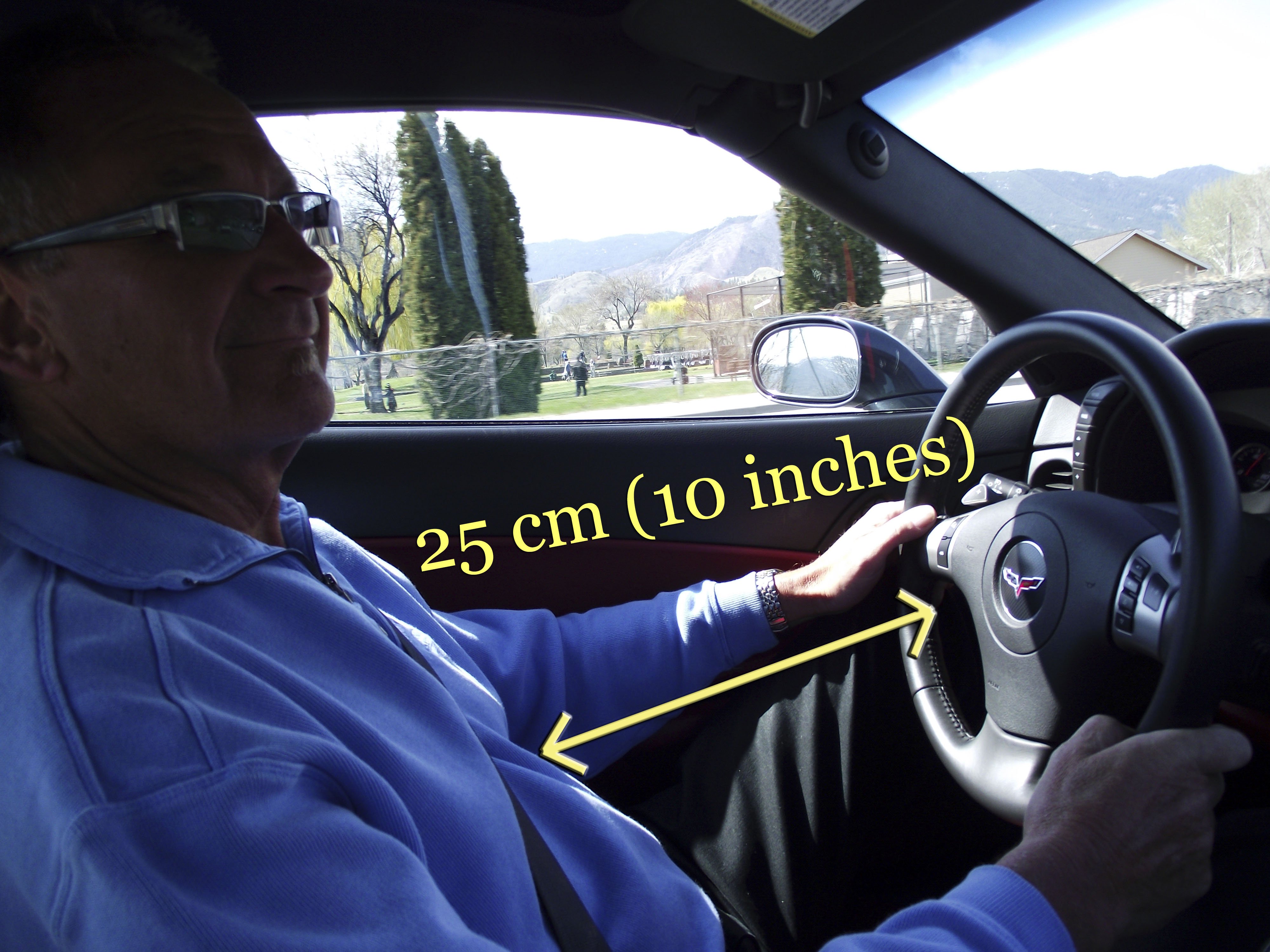Welcome to Steering Techniques
By Steering Techniques I mean a few different things. I’m talking about the placement of your hands on the steering wheel while you are driving, especially while turning the steering wheel for corners and while parking. But also, how you hold the steering wheel when you are simply driving down the road in a straight line. This all matters.
Most people are worried about how to pass the road test, but it’s important to realize that the road test is only going to be 30 minutes give or take out of your entire life. You’ll be driving for a lot longer than that in real life, and it’s important to understand that certain steering techniques can seriously hurt you if you had a collision one day.
Let’s dive into how to hold the steering wheel, how to turn the steering wheel safely, and some techniques to avoid because they are simply dangerous. Preparing for your ICBC road test? Be sure to check out my epic article: ICBC Road Test Tips For Classes 5 & 7 [Instructor Gets Deep].
Poor Steering Techniques – Hooking
Hooking the wheel is when you grab it like this. Many drivers seem to get into this habit, especially while beginning to do a left or right turn at an intersection.
The problem with this is that if one day, you had a collision at an intersection (or a collision anywhere really), and your airbag deployed, this would seriously injure your arm – or worse. Airbags are like bombs and they do deploy at around 300 km/hr so that they are already out by the time you need them to be. This would be like a bomb going off right on top of your arm.
The inflation system is not unlike a solid rocket booster (see How Rocket Engines Work for details). The airbag system ignites a solid propellant, which burns extremely rapidly to create a large volume of gas to inflate the bag. The bag then literally bursts from its storage site at up to 200 mph (322 kph) — faster than the blink of an eye! A second later, the gas quickly dissipates through tiny holes in the bag, thus deflating the bag so you can move.
How Airbags Work – How Stuff Works
Arms could also potentially get stuck and further injured in the event of a collision. Steering wheels go in circles; arms don’t. If you are seen using this technique on the ICBC road test you will not pass the road test, even if your driving is otherwise perfect in every way. It’s just not safe, and there is just no reason to take the risk of added potential injury.
So always keep your hands on the outside of the steering wheel, not on the inside part like this. There is no good reason to ever steer like this.
Poor Steering – Palming the Wheel
Avoid “Palming” the wheel. It is not good control at all. It’s basically when people just literally turn the wheel with their palms. I suppose this seems convenient for some people. But if you have perfectly good hands, those work much better for good car control.
Again, if you are seen driving like this on your ICBC road test you will fail the road test, even if the rest of your driving is absolutely flawless. It’s just not good control over your car. And when you think about it, cars can weigh roughly 2500 to 3500 pounds and more, so it’s good to take it seriously.
You are controlling that much mass literally with the palm – but hopefully more than the palms – of your hands. You are responsible for a heavy object that has the potential to hurt people. Just something to think about. Your palm could easily slip off because there just isn’t much of your hand actually touching the wheel.
Poor Steering Techniques – 12:00 and Stick
Try and avoid the “12 and Stick” position as well. Two hands on the wheel are much better in control than one. Again with this, if you are seen on the ICBC road test driving only with one hand on the wheel, you’ll fail the road test, even if the rest of your driving is perfect.
If you’re driving a standard, just put your hand back on the wheel every single time after you shift gears. If you’re driving an automatic, you can take one hand off for a moment if you need to do something human; such as move the hair out of your eyes, readjust your glasses or scratch your face. Just put your hand back on the wheel again every time, as soon as you can.
Safe Steering Techniques – 9:00 and 3:00
Most driving professionals nowadays recommend holding the wheel for general driving at the 9:00 and 3:00 positions. You can turn the wheel the most while keeping your hands on the wheel and it is the best position if the airbag were to deploy. Many wheels even have thumb/finger grips to encourage drivers to hold the wheel here.
Steering Techniques of the Past – 10:00 and 2:00
10:00 and 2:00 could be deadly in the event of a crash and are no longer recommended by professionals due to the risk of airbag injuries. It used to be “the way,” but now that cars have airbags in the steering wheels, it is going – or perhaps has already gone – out of style. Out of safety, is really what it is.
Back in the good old days when it was a rule that you had to have your hands at 10:00 and 2:00, there were no airbags inside of steering wheels. Now it is a Canadian law that all new vehicles are equipped with a steering wheel airbag (and many cars have airbags in additional locations). Times change, and so must our habits.
Boal says if your hands are at the top of the steering wheel during a crash they can blow back when the airbag comes out. Drivers end up punching themselves in the face at high speeds, causing all sorts of injuries.
Steering at 10 and 2 dangerous, say experts – CTV News
Steering Techniques on the highway – 8:00 and 4:00
The 8:00 and 4:00 position is acceptable in my opinion when driving for long distances on the highway/freeway. Different driving instructors may have different opinions. But especially being someone that has had a shoulder injury, the 9:00 and 3:00 position just isn’t as comfortable for long distances, personally.
Shuffle Steering Technique & Hand-over-Hand
A good way to steer is to use the shuffle steering method or use hand-over-hand. You can also use a combination of these. Check out my YouTube video of the hand-over-hand and shuffle steering methods.
Steering techniques – Avoid sitting too close to the steering wheel
Make sure you’re sitting no closer than 25 cm to the steering wheel. Again, this is for airbag safely reasons.
Do not put feet on dashboard airbags
Do not let people rest their legs on the dashboard unless they are fine with resting their legs on a bomb. Not trying to be dramatic with that statement; it’s simply the truth. I’ve seen so many people driving down the highway at 100 km/hr or more with their passenger’s feet resting on this bomb. I photoshopped this picture so that I would not have to take the risk of even putting anyone’s feet there for even one second while driving.
Can you drive a car without a horn?
It is illegal to drive my car without a horn? Some people are wondering about this.
It’s illegal to drive your car without a properly working horn. This is dangerous. You need to be able to make a sound to alert other road users if there’s some kind of a situation, or worse, an emergency situation. If your horn isn’t working, get it repaired immediately, or don’t drive the vehicle.
For example… Sometimes cars or trucks have brakes that simply fail, and that vehicle might be careening toward a school playground. How terrible would it be if you weren’t able to honk your horn to alert pedestrians to run out of the way?
Related Articles:

